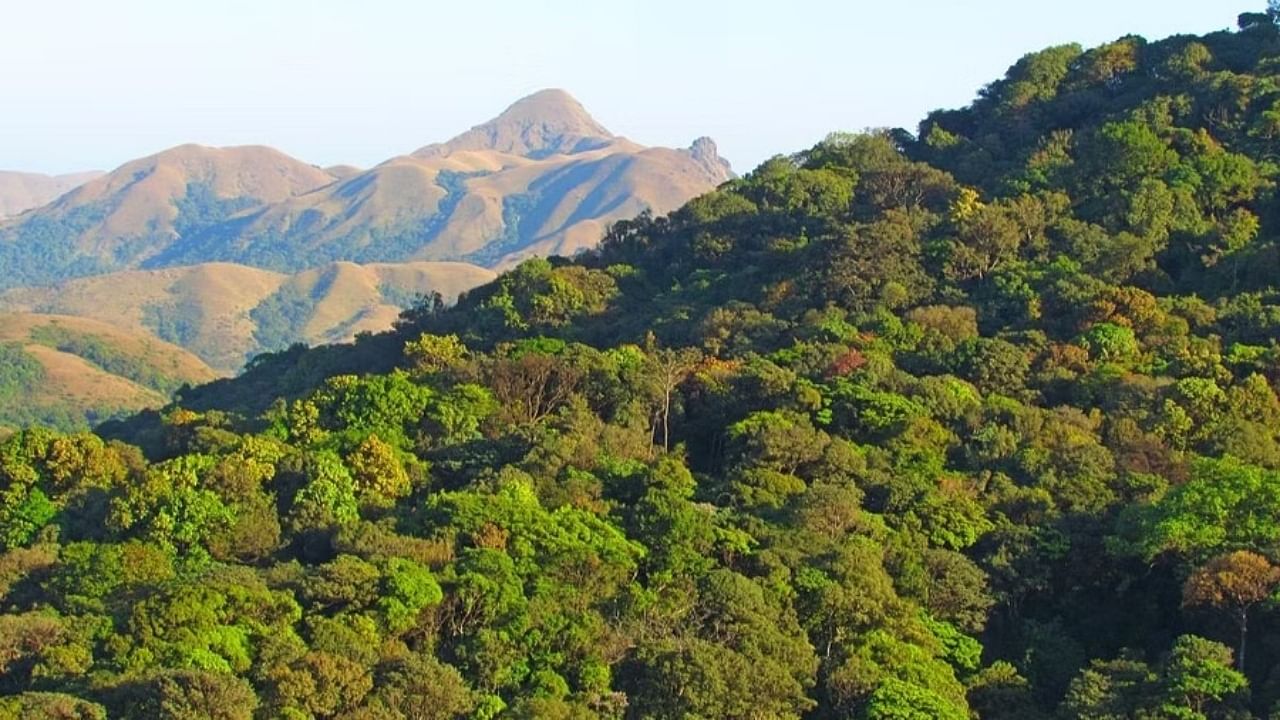
Representative image of forest.
Credit: DH Photo
Recently, Chief Minister Siddaramaiah stressed the need to protect forests and wildlife and called for expanding ‘the forest area from 20 per cent to 33 per cent to reduce the impact of climate disasters’. This proactive stance from the head of the government clearly recognises the link between maintaining forest cover and ensuring ecological and livelihood security for both humans and wildlife.
However, the crucial question remains: is it possible and feasible to increase the state’s forest cover, and does the forest department have the willingness and capability to achieve such an ambitious target in the coming years?
In comparison to other states, Karnataka has the distinction of increasing the forest cover from 19 per cent to 21 per cent, according to the biennial India State of Forest Report by the Forest Survey of India in 2021. Environmentalists, however, are sceptical about this reported increase, contending that satellite imagery may have included tree cover from plantations like areca, coffee, rubber, and trees on farmland as forests.
Regardless of the accuracy of these claims, it is evident that the forest department has had a unique experience establishing plantations over the past two centuries. Unfortunately, the emphasis has predominantly been on cultivating commercially viable spices like teak or eucalyptus, often at the expense of clearing diverse, natural forests for monoculture plantations.
To increase the forest cover, the state has secured substantial funding from the World Bank for social forestry in 1980, aid from the British government for the Western Ghat Forestry Project in 1990, loans from Japan to create forests in the Eastern Plains, and central government funds under the Compensatory Afforestation Fund. Most forests are situated in the hilly regions of the Western Ghats, benefiting from ample rainfall and favourable soil conditions. However, the establishment of monoculture plantations has adversely impacted local flora and fauna as they are not suitable for local conditions.
Chipko leader Sunderlal Bahuguna criticised these plantations as “timber mines” because they were clear-felled after a mere 15 years. It is not possible to grow forests with this short-term vision. The state has two lakh acres of acacia plantations, which may reduce the pressure on natural forests but will have an adverse impact on wildlife and watersheds.
Experts like Prof Madhav Gadgil contend that the natural forest cover is less than 10%, with most being plantations, requiring the state to double its forest cover to meet the chief minister’s target.
With the threat of constant encroachment of forestland for the extension of coffee and areca plantations and growing food crops, it is a herculean task to maintain the existing tree cover. Most politicians, irrespective of party affiliations, support these encroachments. Will the chief minister go against these politicians to achieve his goal of increasing forest cover?
Old-growth or natural forests play a crucial role in enhancing flora and fauna, maintaining watersheds that provide perennial water sources for our rivers, and conserving biodiversity. They also provide security against climate disasters like landslides and floods. Despite these fundamental contributions, we are not in a position to recreate or regenerate natural forests. Ironically, we are decimating the existing forest cover through linear infrastructure projects like the construction of new rail lines or the diversion of rivers. A recent study has calculated that 24 lakh trees will be cut in the fragile Western Ghat region for such projects.
With the recent dilution of the Forest Conservation Act by the central government, there will be more pressure to divert forestland without any impact assessment. Governments have not learned lessons from recurring floods and landslides in most regions of the Western Ghats.
Instead of destroying the natural biodiversity of forests, the government should prioritise conserving what remains and form a road map for greening barren lands. Simply planting crores of saplings and setting more plantation targets won’t significantly increase forest cover.
The need of the hour is to plant species adapted to local microclimates and soil conditions, fostering soil health, water conservation, and providing a livelihood base for birds and wildlife who help regenerate indigenous forest species through seed dispersal.
Given the current political and bureaucratic landscape, is it possible to double the forest cover? Is the forest department willing to shift its focus from the commercial objective of fast-growing monoculture plantations to the ecological objective of building the basic capital of mankind, the soil, water, and air?
The chief minister has laid out the policy statement with good intention, and now the ball is in the court of the forest department to implement this plan based on ground realities.
(The writer is a Uttara Kannada-based environmentalist)